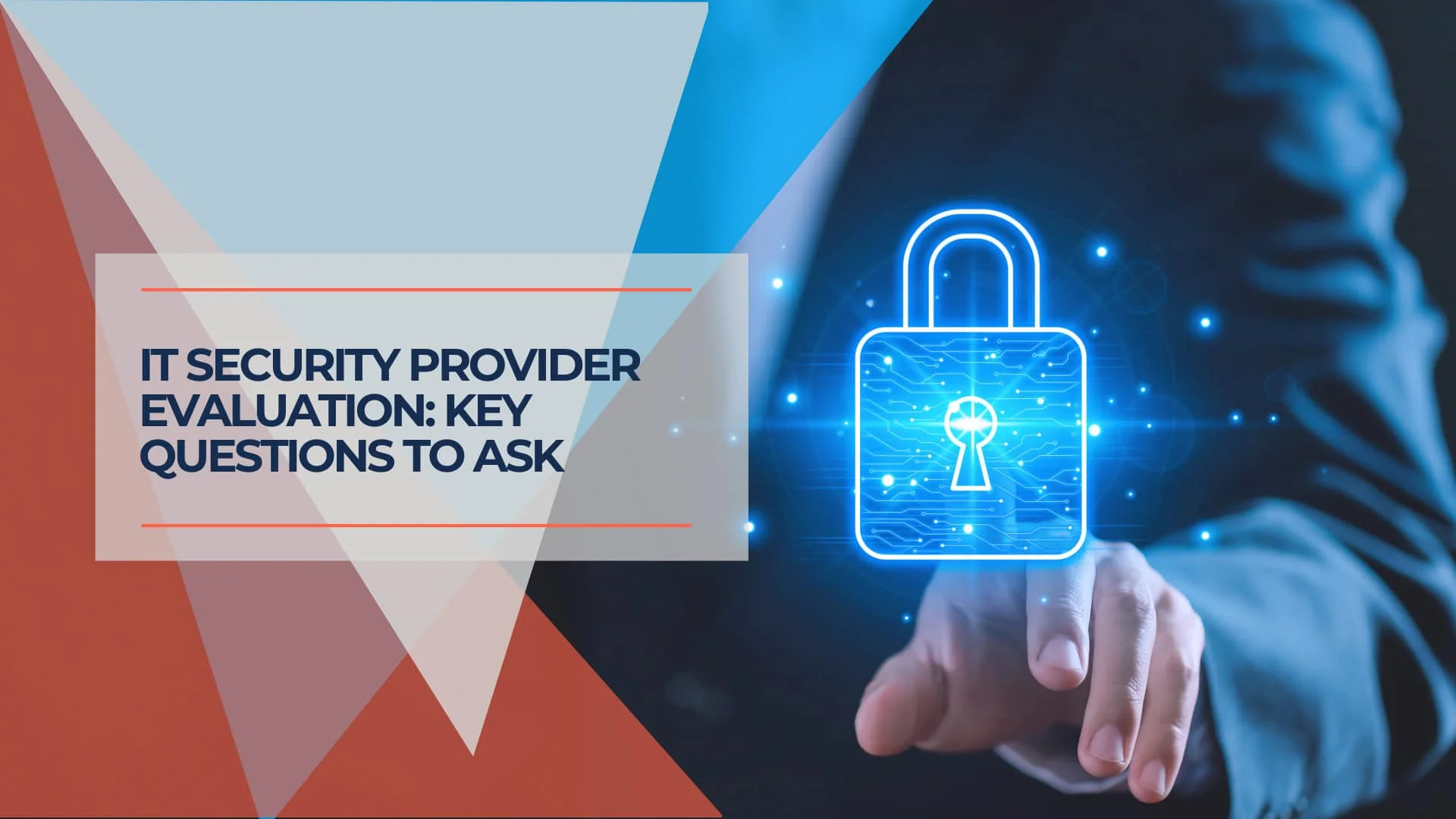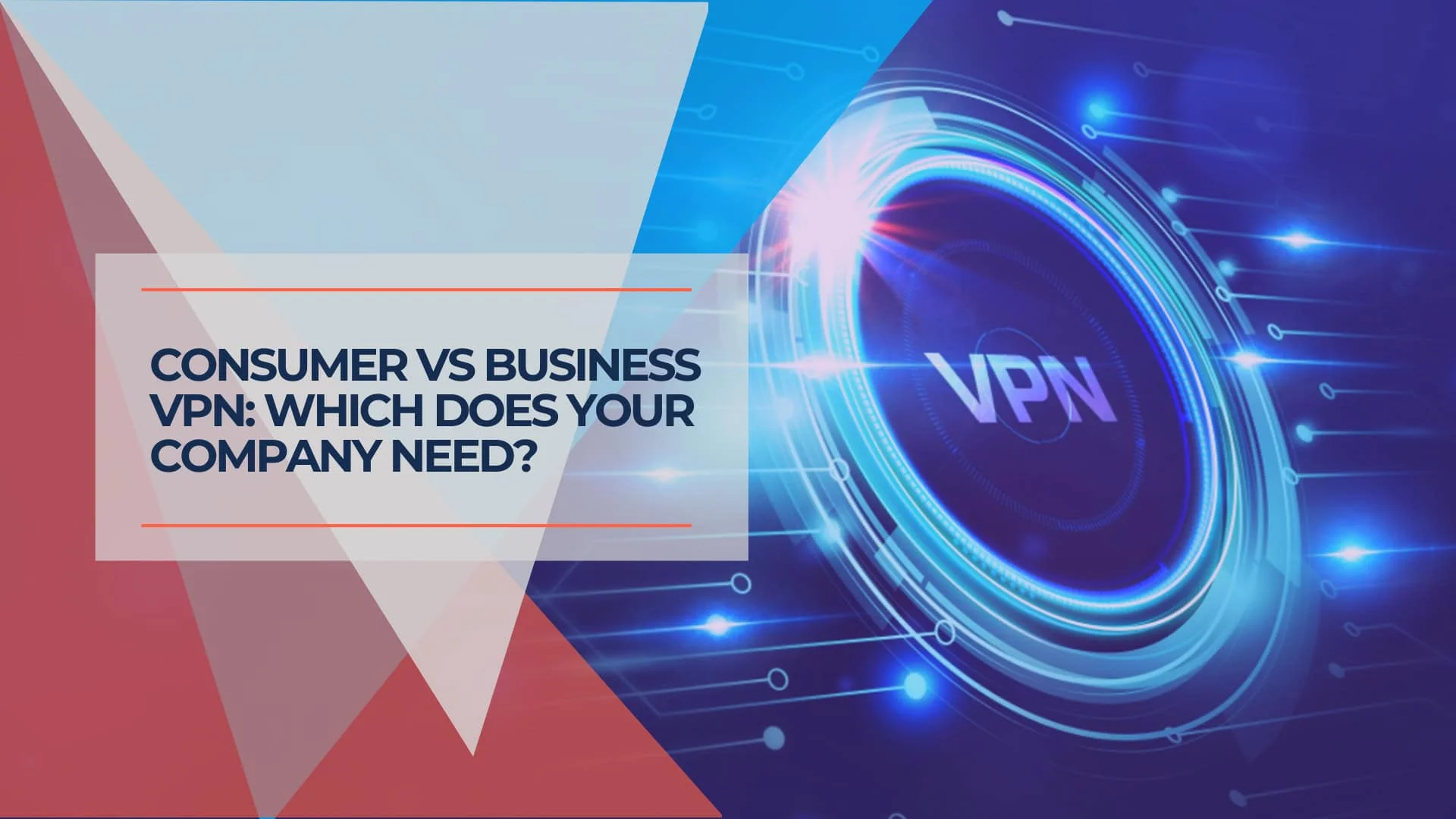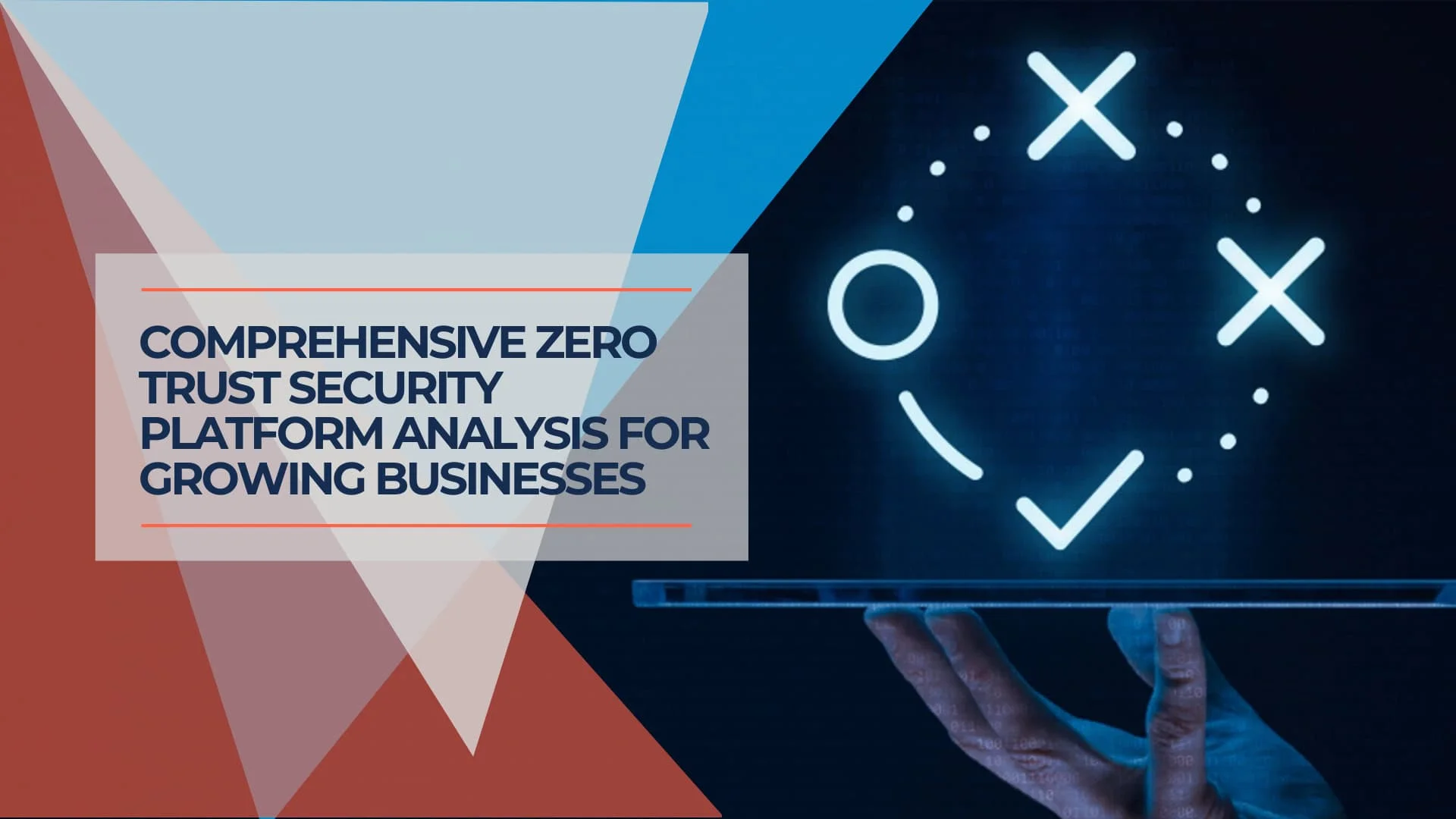How to Evaluate Network Security: Questions to Ask Your IT Provider
Learn essential questions to ask when evaluating network security providers. Expert framework helps business owners choose the right IT security partner.


Affiliate Disclosure: This article contains affiliate links. If you make a purchase through these links, we may earn a small commission at no extra cost to you.
Published: September 2025 | Last updated: September 2025
Key Takeaway
The right questions can reveal whether your IT provider understands network security or offers basic services. This comprehensive evaluation framework helps business owners make informed decisions about cybersecurity partnerships, covering everything from technical capabilities to response procedures and ongoing support.
Most business owners focus on price and basic services when evaluating network security providers. However, the quality of your cybersecurity partnership can determine whether your business survives a cyber incident or faces significant operational disruption. With cyber attacks affecting 46% of small businesses in 2024 and average recovery costs reaching $280,000, choosing the right security provider represents one of your most important business decisions.
This guide systematically evaluates network security providers through targeted questions that reveal their true capabilities, experience, and alignment with your business needs. Whether you're hiring your first IT security provider or evaluating your current relationship, these questions will help you make an informed decision that protects your business operations and data.
Understanding Your Security Evaluation Needs
Before diving into provider evaluation, it's important to understand what distinguishes a comprehensive security provider from a basic IT service. True network security providers offer layered protection strategies, proactive monitoring, incident response capabilities, and ongoing education rather than simply installing antivirus software and assuming adequate protection.
The most effective security providers understand that small and medium businesses face unique challenges. They need enterprise-level protection with appropriate budgets, often lack dedicated IT staff, and require solutions that integrate seamlessly with daily operations. Your evaluation process should identify providers who genuinely understand these constraints and can deliver suitable solutions.
Our security audit checklist provides a systematic approach to identifying potential vulnerabilities and improvement areas for businesses seeking to understand their current security posture before provider evaluation.
Essential Technical Capability Questions
Network Infrastructure Security
Start your evaluation by understanding how the provider approaches fundamental network protection. These questions reveal their technical depth and methodology:
"How do you segment networks to limit potential breach impact?"
A qualified provider should explain network segmentation strategies, including VLAN implementation, firewall rules, and access controls. They should understand the importance of isolating critical systems and limiting lateral movement during security incidents. Look for specific examples of how they've implemented segmentation for similar businesses.
"What firewall solutions do you recommend and why?"
The answer should demonstrate understanding of next-generation firewalls, intrusion prevention systems, and application-aware filtering. Quality providers will discuss solutions like SonicWall, Fortinet, or enterprise-grade UniFi security appliances rather than consumer-grade equipment. They should explain their selection criteria based on your business size and specific requirements.
"How do you handle remote access security?"
With distributed workforces, remote access security has become fundamental. Providers should discuss VPN solutions, multi-factor authentication, and zero-trust architecture principles. They might recommend enterprise VPN services or comprehensive business password management solutions for secure credential handling across remote teams.
Endpoint and Device Protection
Modern businesses rely on various devices, each representing a potential entry point for threats. Quality providers understand comprehensive endpoint protection:
"What endpoint detection and response (EDR) solutions do you deploy?"
Look for providers who understand the difference between basic antivirus and advanced EDR solutions. They should discuss behavior-based detection, automated response capabilities, and integration with network monitoring systems. Quality solutions provide real-time threat intelligence and automated remediation capabilities.
"How do you secure mobile devices and remote workers?"
The provider should address mobile device management (MDM), application security, and secure communication protocols. They should understand the challenges of BYOD policies and provide practical solutions that balance security requirements with user productivity.
Red Flag: Basic Antivirus Only
If a provider's security strategy relies primarily on basic antivirus software, this indicates a limited understanding of modern threat landscapes. Today's threats often bypass traditional signature-based detection, requiring behavioral analysis and advanced response capabilities.
Monitoring and Threat Detection Questions
Effective security requires continuous monitoring and rapid threat detection. These questions help evaluate a provider's monitoring capabilities:
"What security monitoring tools do you use and how often do you review alerts?"
Quality providers use Security Information and Event Management (SIEM) systems or similar tools for centralized log analysis and threat detection. They should explain their alert triage process and response timeframes. Look for providers who mention specific tools and demonstrate understanding of alert prioritization.
"How do you stay current with emerging threats and vulnerabilities?"
The cybersecurity landscape changes rapidly. Effective providers participate in threat intelligence sharing, monitor security bulletins, and maintain relationships with security vendors. They should explain how this intelligence influences their protection strategies and client communications.
"What is your process for vulnerability management and patch deployment?"
Regular vulnerability assessments and prompt patch deployment are security fundamentals. Providers should describe automated scanning processes, risk assessment procedures, and change management protocols. They should understand the balance between security updates and business continuity.
For businesses wanting to understand what comprehensive cybersecurity solutions should include, our small business cybersecurity software guide provides detailed comparisons of enterprise-grade solutions and their capabilities.
Incident Response and Recovery Planning
When security incidents occur, response speed and effectiveness determine business impact. These questions evaluate incident response capabilities:
"Walk me through your incident response process from detection to resolution."
A comprehensive answer should cover detection methods, escalation procedures, containment strategies, evidence preservation, and recovery processes. Quality providers maintain documented incident response plans and can provide examples of handling similar situations.
"How quickly can you respond to a security incident, and what determines response priority?"
Response times vary based on incident severity, but providers should have clear service level agreements and escalation procedures. They should explain how they classify incidents and allocate response resources accordingly.
"What backup and disaster recovery capabilities do you provide or recommend?"
Effective recovery often depends on reliable backup systems. Providers should understand various backup strategies, including cloud solutions like comprehensive backup and security platforms, and local backup appliances. They should also discuss recovery time objectives and testing procedures.
Communication and Business Alignment Questions
Security providers must communicate effectively with non-technical stakeholders and align with business objectives:
"How do you explain security risks and recommendations to business owners?"
Quality providers can translate technical concepts into business terms, focusing on risk impact and mitigation strategies rather than technical jargon. They should provide clear explanations of security investments and expected outcomes.
"What reporting do you provide on security status and incidents?"
Regular reporting helps business owners understand their security posture and investment value. Providers should offer dashboard access, monthly summaries, and incident reports highlighting trends and improvement opportunities.
"How do you handle security training for our employees?"
Human error contributes to many security incidents. Effective providers include security awareness training, phishing simulations, and ongoing education as part of their services. They should explain how they customize training for different roles and industries.
Questions That Indicate Quality Providers
- They ask detailed questions about your business operations and data flows
- They inquire about your risk tolerance and compliance requirements
- They want to understand your budget constraints and growth plans
- They discuss security as part of broader business objectives
- They explain both the technical and business benefits of their recommendations
Compliance and Risk Management Questions
Many businesses face regulatory requirements that impact security decisions. Evaluate provider understanding of compliance obligations:
"What experience do you have with our industry's compliance requirements?"
Providers should understand relevant regulations, such as HIPAA for healthcare, PCI DSS for payment processing, or SOX for publicly traded companies. They should also explain how their security measures support compliance objectives and audit requirements.
"How do you help clients maintain ongoing compliance?"
Compliance is an ongoing process requiring regular assessments, documentation, and updates. Quality providers assist with compliance monitoring, documentation, and audit preparation rather than treating compliance as a one-time implementation.
"What cyber insurance requirements do you help address?"
Cyber insurance has become essential for many businesses, but insurers often require specific security measures. Providers should understand common insurance requirements and help implement necessary controls to maintain coverage and potentially reduce premiums.
Our enterprise security solutions guide provides additional insights into compliance requirements and how comprehensive security platforms address regulatory needs.
Cost Structure and Value Assessment
Understanding the total cost of security services helps evaluate long-term value:
"How do you structure pricing, and what does it include?"
Transparent providers explain their pricing models clearly, whether per device, per user, or comprehensive service packages. They should detail what's included in base services versus additional incident response, training, or upgrade charges.
"What additional costs should we expect for security improvements or incident response?"
Hidden costs can significantly impact security budgets. Quality providers explain potential additional expenses upfront, including emergency response fees, major security upgrades, or compliance assessment costs.
"How do you demonstrate return on investment for security services?"
Effective providers can articulate the value of their services in business terms, including risk reduction, compliance benefits, and productivity improvements. They should provide case studies or examples of how their services have benefited similar businesses.
Implementation and Transition Questions
If you're changing providers or implementing new security measures, understanding the transition process is essential:
"What is your implementation timeline and process?"
Quality providers present realistic implementation schedules that minimize business disruption. They should explain phasing strategies, testing procedures, and contingency plans for potential issues during transition.
"How do you handle documentation and knowledge transfer?"
Proper documentation ensures continuity and helps your team understand implemented security measures. Providers should create network diagrams, security policies, and operational procedures that remain accessible to your organization.
"What ongoing support and maintenance do you provide?"
Security requires continuous attention through monitoring, updates, and optimization. Providers should explain their ongoing support model, including response times, regular maintenance schedules, and performance review processes.
Red Flags to Avoid During Evaluation
Certain provider responses should raise immediate concerns about their capabilities or business practices:
Warning Signs in Provider Responses
- Reluctance to explain technical approaches or methodologies
- Promises of "100% security" or "unhackable" systems
- Pressure to sign contracts immediately without proper evaluation
- Inability to provide client references or case studies
- Focus solely on price without discussing security value
- Lack of industry certifications or security credentials
- Unclear incident response procedures or response time commitments
Additionally, be cautious of providers who cannot explain their recommendations in business terms or who seem unfamiliar with your industry's specific security challenges. Quality providers should demonstrate genuine interest in understanding your business rather than simply selling predetermined solutions.
Creating Your Evaluation Framework
Develop a systematic approach to provider evaluation by organizing these questions into categories and scoring responses:
Technical Competency (30% weight)
Evaluate responses to infrastructure, monitoring, and endpoint security questions. Look for specific examples, appropriate technology recommendations, and a clear understanding of security principles.
Business Alignment (25% weight)
Assess communication skills, industry knowledge, and ability to translate technical concepts into business value. Consider how well the provider understands your specific challenges and requirements.
Response and Recovery (25% weight)
Review incident response procedures, backup strategies, and disaster recovery capabilities. Consider response time commitments and escalation procedures.
Value and Transparency (20% weight)
Evaluate pricing transparency, ongoing support models, and demonstrated ROI. Consider the provider's willingness to explain costs and provide detailed service descriptions.
Documentation and Reference Verification
Request and verify provider credentials, certifications, and references:
Professional Certifications: Look for industry certifications like CISSP, CISM, CompTIA Security+, or vendor-specific credentials demonstrating technical competency.
Client References: Request references from similar businesses and verify their experiences with the provider. Ask about response times, communication quality, and overall satisfaction.
Case Studies: Review detailed examples of how the provider has addressed security challenges for businesses like yours. Look for measurable outcomes and lessons learned.
Making Your Final Decision
After completing your evaluation, synthesize the information to make an informed decision. Consider creating a comparison matrix that weights different factors according to your business priorities. Remember that the lowest cost option is rarely the best choice for security services, where the consequences of inadequate protection can significantly impact business operations.
The ideal security provider combines technical expertise with business understanding, transparent communication, and a genuine commitment to your success. They should serve as a trusted advisor who helps you navigate complex security decisions while maintaining focus on your business objectives.
Professional Assessment Opportunity
If you're overwhelmed by the evaluation process or want professional guidance, consider assessing your security posture professionally. Our cybersecurity assessment services can help identify gaps and provide a foundation for provider discussions.
Next Steps and Implementation
Once you've selected a security provider, establish clear expectations and communication protocols from the beginning. Document service level agreements, escalation procedures, and performance metrics to guide your ongoing relationship.
Regular security posture and provider performance reviews ensure continued alignment with your business needs. Schedule quarterly assessments to discuss emerging threats, technology updates, and evolving business requirements.
Our team provides detailed assessments and implementation support for businesses in South Florida seeking a comprehensive network security evaluation. We understand the unique challenges facing small and medium businesses and can help you develop security strategies that protect your operations while supporting growth objectives.
Remember that network security is an ongoing partnership rather than a one-time implementation. The right provider will grow with your business, adapting security measures to meet changing requirements while maintaining consistent protection against evolving threats.
Get Your Free Security AssessmentFrequently Asked Questions
How many security providers should I evaluate before making a decision?
Evaluate at least three providers to understand the available services and pricing range. This provides sufficient comparison data while keeping the evaluation process manageable. Focus on the quality of responses rather than the quantity of options.
What certifications should I look for in a security provider?
Look for industry certifications like CISSP, CISM, CISA, or CompTIA Security+ among the provider's staff. Company certifications such as SOC 2 Type II or ISO 27001 indicate organizational commitment to security standards.
How much should I expect to spend on network security services?
Security costs typically range from $200-$600 per employee monthly, depending on business complexity and requirements. When budgeting, factor in both service costs and necessary equipment or software investments.
Should I choose a local provider or consider national companies?
Local providers often offer more personalized service and faster on-site response times, while national companies may provide broader expertise and resources. When making this decision, consider your business needs, growth plans, and support requirements.
How often should I reassess my security provider relationship?
Conduct annual assessments with quarterly check-ins to discuss performance and emerging needs. Major business changes, security incidents, or significant technology updates may warrant additional reviews.
What should I do if my current provider cannot answer these questions satisfactorily?
Document gaps in their responses and request detailed follow-up information. If they cannot answer fundamental security questions satisfactorily, consider seeking additional providers for comparison. Your business security requires appropriate expertise and attention.
Related Articles
More from Cybersecurity

Business VPN vs Consumer VPN: What SMBs Actually Need (2025)
Comprehensive comparison of business VPNs vs consumer VPNs for small businesses. Decision framework, cost analysis, recommended solutions, and real-world scenarios to help you choose the right VPN.
9 min read

Are We Being Hacked or Are Our Computers Just Slow? A Business Owner's Diagnostic Guide
Learn to distinguish between normal computer performance issues and cybersecurity incidents. Systematic diagnostic framework with checklists, warning signs, and guidance on when to call professionals.
17 min read

NordLayer for Business (2025): Complete SMB Security Platform Review
Comprehensive NordLayer review for small businesses. Zero Trust architecture, pricing analysis, implementation guide, and honest assessment of when NordLayer is the right choice vs alternatives.
9 min read